Netter’s Atlas of Neuroscience 4th Edition
Netter’s Atlas of Neuroscience 4th Edition (Netter Basic Science):
Additional ISBNs:
∗ eText ISBN: 0323756557, 978-0323756556, 9780323756556
Table of Contents
Cover image
Title page
Table of Contents
Copyright
About The Authors
Dedication
Acknowledgments
Preface
About The Artists
Video Contents
Section I. Overview of the Nervous System
1. Neurons and Their Properties
Anatomical and Molecular Properties
1.2. 3D Neuronal Structure and Neurohistology
1.3. Neuronal Ultrastructure
1.4. Types of Synapses
1.5. Neuronal Cell Types
1.6. Molecular Techniques for Studying Neurons
1.7. Genetic Models for Studying Neurons and Their Disorders
1.8. Glial Cell Types
1.9. Astrocyte Biology
1.10. Microglial Biology
1.11. Oligodendrocyte Biology
1.12. Neuronal Growth Factors and Trophic Factors
1.13. Stem Cells in the CNS: Intrinsic and Extrinsic Mechanisms
1.14. Stem Cell Therapy
1.15. Blood-Brain Barrier
1.16. Inflammation in the CNS
1.17. Axonal Transport in the CNS And PNS
1.18. Myelination of CNS AND PNS Axons
1.19. Development of Myelination and Axon Ensheathment
Electrical Properties
1.21. Neuronal Membrane Potential and Sodium Channels
1.22. Graded Potentials in Neurons
1.23. Mechanisms of Excitatory Postsynaptic Potentials and Inhibitory Postsynaptic Potentials
1.24. Action Potentials
1.25. Propagation of the Action Potential
1.26. Node Of Ranvier And Conduction Velocity
1.27. Classification of Peripheral Nerve Fibers by Size and Conduction Velocity
1.28. Electromyography and Conduction Velocity Studies
1.29. Presynaptic and Postsynaptic Inhibition
1.30. Spatial and Temporal Summation
1.31. Normal Electrical Firing Patterns of Cortical Neurons and the Origin and Spread of Seizures
1.32. Electroencephalography
1.33. Types of Electrical Discharges in Generalized Seizures and Sites of Action of Antiseizure Medications
1.34. Visual and Auditory Evoked Potentials
Neurotransmitter and Signaling Properties
1.36. Mechanisms of Molecular Signaling in Neurons
1.37. Neurotransmitter Release
1.38. Multiple Neurotransmitter Synthesis, Release, and Signaling from Individual Neurons
1.39. Neuronal Signal Transduction: Local Regulation of Synaptic Strength at an Excitatory Synapse
1.40. Neuronal Signal Transduction: Regulation of Nuclear Signaling
1.41. Glucocorticoid Regulation of Neurons and Apoptosis
1.42. Chemical Neurotransmission (CONTINUED)
2. Skull and Meninges
2.1. Interior View of the Base of the Adult Skull
2.2. Foramina in the Base of the Adult Skull
2.3. Bony Framework of the Head and Neck
2.4. Schematic of the Meninges and Their Relationships to the Brain and Skull
2.5. Hematomas
3. Brain
3.1. Surface Anatomy of the Forebrain: Lateral View
3.2. Lateral View of the Forebrain: Functional Regions
3.3. Lateral View of the Forebrain: Brodmann’s Areas
3.4. Anatomy of the Medial (Midsagittal) Surface of the Brain in Situ
3.5. Anatomy of the Medial (Midsagittal) Surface of the Brain, with Brainstem Removed
3.6. Medial Surface of the Brain
3.7. Anatomy of the Basal Surface of the Brain, with the Brainstem and Cerebellum Removed
3.8. Basal Surface of the Brain: Functional Areas and Brodmann’s Areas
3.9. Brain Imaging: Computed Tomography Scans, Coronal and Sagittal
3.10. Brain Imaging: Magnetic Resonance Imaging, Axial and Sagittal T1-Weighted Images
3.11. Brain Imaging: Magnetic Resonance Imaging, Axial and Sagittal T2-Weighted Images
3.12. Positron Emission Tomography Scanning
3.13. Horizontal Brain Sections Showing the Basal Ganglia
3.14. Major Limbic Forebrain Structures
3.15. Corpus Callosum
3.16. Color Imaging of the Corpus Callosum by Diffusion Tensor Imaging
3.17. Hippocampal Formation and Fornix
3.18. Thalamic Anatomy
3.19. Thalamic Nuclei
4. Brainstem and Cerebellum
4.1. Brainstem Surface Anatomy: Posterolateral View
4.2. Brainstem Surface Anatomy: Anterior View
4.3. Cerebellar Anatomy: External Features
4.4. Cerebellar Anatomy: Internal Features
5. Spinal Cord
5.1. Spinal Column: Bony Anatomy
5.2. Lumbar Vertebrae: Radiography
5.3. Spinal Cord: Gross Anatomy in Situ
5.4. The Spinal Cord: Its Meninges and Spinal Roots
5.5. Spinal Cord: Cross-Sectional Anatomy in Situ
5.6. Spinal Cord: White and Gray Matter
6. Ventricles and the Cerebrospinal Fluid
6.1. Ventricular Anatomy
6.2. Ventricular Anatomy in Coronal Forebrain Section
6.3. Anatomy of the Fourth Ventricle: Posterior View with Cerebellum Removed
6.4. Anatomy of the Fourth Ventricle: Lateral View
6.5. Magnetic Resonance Imaging of the Ventricles: Axial and Coronal Views
6.6. Circulation of the Cerebrospinal Fluid
6.7. Hydrocephalus and Shunting of the Cerebrospinal Fluid
6.8. Normal Pressure Hydrocephalus
7. Vasculature
Arterial System
7.2. Arterial Supply to the Brain and Meninges
7.3. Common Sites of Cerebrovascular Occlusive Disease
7.4. Internal Carotid and Ophthalmic Artery Course and Cavernous Sinus Fistula
7.5. Arterial Distribution to the Brain: Basal View
7.6. Arterial Distribution to the Brain: Cutaway Basal View Showing the Circle of Willis
7.7. Arterial Distribution to the Brain: Frontal View with Hemispheres Retracted
7.8. Arterial Distribution to the Brain: Coronal Forebrain Section
7.9. Types of Strokes
7.10. Lacunar Infarcts
7.11. Schematic of Arteries to the Brain
7.12. Circle of Willis: Schematic Illustration and Vessels in Situ
7.13. Intracranial Aneurysms and Subarachnoid Hemorrhage
7.14. Arterial Distribution to the Brain: Lateral and Medial Views
7.15. Territories of the Cerebral Arteries
7.16. Magnetic Resonance Angiography: Frontal and Lateral Views
7.17. Angiographic Anatomy of the Internal Carotid Circulation
7.18. Vertebrobasilar Arterial System
7.19. Angiographic Anatomy of the Vertebrobasilar System
7.20. Occlusive Sites of the Vertebrobasilar System
7.21. Vascular Supply to the Hypothalamus and the Pituitary Gland
7.22. Arterial Blood Supply to the Spinal Cord: Longitudinal View
7.23. Anterior and Posterior Spinal Arteries and Their Distribution
7.24. Arterial Supply to the Spinal Cord: Cross-Sectional View
Venous System
7.26. Veins: Superficial Cerebral, Meningeal, Diploic, and Emissary
7.27. Venous Sinuses
7.28. Deep Venous Drainage of the Brain
7.29. Deep Venous Drainage of the Brain: Relationship to the Ventricles
7.30. Carotid Venograms: Venous Phase
7.31. Magnetic Resonance Venography: Coronal and Sagittal Views
7.32. Venous Drainage of the Brainstem and the Cerebellum
7.33. Venous Drainage of the Spinal Cord
8. Developmental Neuroscience
8.1. Formation of the Neural Plate, Neural Tube, and Neural Crest
8.2. Neurulation
8.3. Neural Tube Development and Neural Crest Formation
8.4. Development of Peripheral Axons
8.5. Somatic Versus Splanchnic Nerve Development
8.6. Limb Rotation and Dermatomes
8.7. Neural Proliferation and Differentiation: Walls of the Neural Tube
8.8. Neural Tube and Neural Crest Derivatives
8.9. Early Brain Development: The 28-Day-Old Embryo
8.10. Early Brain Development: The 36-Day-Old Embryo
8.11. Early Brain Development: The 49-Day-Old Embryo and the 3-Month-Old Embryo
8.12. Forebrain Development: 7 Weeks Through 3 Months
8.13. The 6-Month and 9-Month Central Nervous Systems
8.14. Neurogenesis and Cell Migration in the Developing Neocortex
8.15. Postnatal and Adult Neurogenesis
8.16. Comparison of 5½-Week and Adult Central Nervous System Regions
8.17. Alar And Basal Plate Derivatives in the Brainstem
8.18. Adult Derivatives of the Forebrain, Midbrain, and Hindbrain
8.19. Cranial Nerve Primordia
8.20. Cranial Nerve Neuron Components
8.21. Development of Motor and Preganglionic Autonomic Nuclei in the Brainstem and Spinal Cord
8.22. Development of the Eye and Orbit
8.23. Development of the Ear
8.24. Development of the Pituitary Gland
8.25. Development of the Ventricles
8.26. Development of the Fourth Ventricle
8.27. Neural Tube Defects
8.28. Defects of the Brain and Skull
8.29. Fetal Alcohol Syndrome
Section II. Regional Neuroscience
9. Peripheral Nervous System
Introduction and Basic Organization
9.2. Anatomy of a Peripheral Nerve
9.3. Nerve Compression and Pressure Gradients
9.4. Peripheral Nerve Injury and Degeneration in a Compression Neuropathy
9.5. Relationship of Spinal Nerve Roots to Vertebrae
9.6. Lumbar Disc Herniation: L4–L5 and L5–S1
9.7. Sensory Channels: Reflex and Cerebellar
9.8. Sensory Channels: Lemniscal
9.9. Motor Channels: Basic Organization of Lower and Upper Motor Neurons
9.10. Autonomic Channels
9.11. Cutaneous Receptors
9.12. Pacinian Corpuscles
9.13. Interoceptors
9.14. Skin and Its Nerves
9.15. The Neuromuscular Junction and Neurotransmission
9.16. Physiology of the Neuromuscular Junction
9.17. Major Structures and Proteins in the Normal Neuromuscular Junction
9.18. Neuroeffector Junctions
Somatic Nervous System
9.20. Cutaneous Distribution of Peripheral Nerves
9.21. Cutaneous Nerves of the Head and Neck
9.22. Cervical Plexus in Situ
9.23. Cervical Plexus
9.24. Phrenic Nerve
9.25. Thoracic Nerves
9.26. Brachial Plexus
9.27. Dermatomes of the Upper Limb
9.28. Cervical Disc Herniation
9.29. Cutaneous Innervation of the Upper Limb
9.30. The Scapular, Axillary, and Radial Nerves above the Elbow
9.31. Radial Nerve in the Forearm
9.32. Musculocutaneous Nerve
9.33. Median Nerve
9.34. Carpal Tunnel Syndrome
9.35. Ulnar Nerve
9.36. Lumbar Plexus
9.37. Sacral and Coccygeal Plexuses
9.38. Femoral and Lateral Femoral Cutaneous Nerves
9.39. Obturator Nerve
9.40. Sciatic and Posterior Femoral Cutaneous Nerves
9.41. Tibial Nerve
9.42. Common Peroneal Nerve
Autonomic Nervous System
9.44. Autonomic Innervation of the Immune System and Metabolic Organs
9.45. Reflex Pathways
9.46. Cholinergic and Adrenergic Synapses
9.47. Schematic of Cholinergic and Adrenergic Distribution to Motor and Autonomic Structures
9.48. Autonomic Distribution to the Head and Neck: Medial View
9.49. Autonomic Distribution to the Head and Neck: Lateral View
9.50. Schematic of Autonomic Distribution to the Head and Neck
9.51. Autonomic Distribution to the Eye
9.52. Autonomic Innervation of the Nasal Cavity
9.53. Schematic of the Pterygopalatine and Submandibular Ganglia
9.54. Schematic of the Otic Ganglion
9.55. Innervation of the Limbs
9.56. Thoracic Sympathetic Chain and Splanchnic Nerves
9.57. Innervation of the Tracheobronchial Tree
9.58. Innervation of the Heart
9.59. Abdominal Nerves and Ganglia
9.60. Nerves of the Esophagus
9.61. Innervation of the Stomach and Proximal Duodenum
9.62. Nerves of the Stomach and Duodenum
9.63. Innervation of the Small and Large Intestines
9.64. Nerves of the Small Intestine
9.65. Nerves of the Large Intestine
9.66. Enteric Nervous System: Longitudinal View
9.67. Enteric Nervous System: Cross-Sectional View
9.68. Autonomic Innervation of the Liver and Biliary Tract
9.69. Autonomic Innervation of the Pancreas
9.70. Schematic of Innervation of the Adrenal Gland
9.71. Innervation of the Adrenal Gland
9.72. Autonomic Pelvic Nerves and Ganglia
9.73. Nerves of the Kidneys, Ureters, and Urinary Bladder
9.74. Innervation of the Kidneys and Upper Ureter
9.75. Innervation of the Urinary Bladder and Lower Ureter
9.76. Innervation of the Male Reproductive Organs
9.77. Innervation of the Female Reproductive Organs
10. Spinal Cord
10.1. Cytoarchitecture of the Spinal Cord Gray Matter
10.2. Spinal Cord Levels: Cervical, Thoracic, Lumbar, and Sacral
10.3. Spinal Cord Levels: Cervical, Thoracic, Lumbar, and Sacral (Continued)
10.4. Spinal Cord Levels: Cervical, Thoracic, Lumbar, and Sacral (Continued)
10.5. Spinal Cord Levels: Cervical, Thoracic, Lumbar, and Sacral (Continued)
10.6. Spinal Cord Histological Cross Sections
10.7. Spinal Cord Histological Cross Sections (Continued)
10.8. Spinal Cord Imaging
10.9. Spinal Cord Syndromes
10.10. Syringomyelia
10.11. Spinal Cord Lower Motor Neuron Organization and Control
10.12. Spinal Somatic Reflex Pathways
10.13. Muscle and Joint Receptors and Muscle Spindles
10.14. The Muscle Stretch Reflex and Its Central Control via Gamma Motor Neurons
Brainstem and Cerebellum
Brainstem Cross-Sectional Anatomy
11.2. Brainstem Cross-Sectional Anatomy: Section 2
11.3. Brainstem Cross-Sectional Anatomy: Section 3
11.4. Brainstem Cross-Sectional Anatomy: Section 4
11.5. Brainstem Cross-Sectional Anatomy: Section 5
11.6. Brainstem Cross-Sectional Anatomy: Section 6
11.7. Brainstem Cross-Sectional Anatomy: Section 7
11.8. Brainstem Cross-Sectional Anatomy: Section 8
11.9. Brainstem Cross-Sectional Anatomy: Section 9
11.10. Brainstem Cross-Sectional Anatomy: Section 10
11.11. Brainstem Cross-Sectional Anatomy: Section 11
11.12. Brainstem Cross-Sectional Anatomy: Section 12
11.13. Brainstem Cross-Sectional Anatomy: Section 13
11.14. Brainstem Cross-Sectional Anatomy: Section 14
11.15. Brainstem Arterial Syndromes
Cranial Nerves and Cranial Nerve Nuclei
11.17. Cranial Nerves and Their Nuclei: Schematic View From Above
11.18. Cranial Nerves and Their Nuclei: Schematic Lateral View
11.19. Nerves of the Orbit
11.20. Nerves of the Orbit (continued)
11.21. Extraocular Nerves (III, IV, and VI) and the Ciliary Ganglion: View in Relation to the Eye
11.22. Trigeminal Nerve (V)
11.23. Innervation of the Teeth
11.24. Facial Nerve (VII)
11.25. Facial Nerve Branches and the Parotid Gland
11.26. Facial Nerve Lesions and Their Manifestations
11.27. Vestibulocochlear Nerve (VIII)
11.28. Glossopharyngeal Nerve (IX)
11.29. Accessory Nerve (XI)
11.30. Vagus Nerve (X)
11.31. Hypoglossal Nerve (XII)
Reticular Formation
11.33. Reticular Formation: Nuclei and Areas in the Brainstem and Diencephalon
11.34. Major Afferent and Efferent Connections to the Reticular Formation
11.35. Sleep-Wakefulness Control
Cerebellum
11.37. Cerebellar Anatomy: Lobules
11.38. Cerebellar Anatomy: Deep Nuclei and Cerebellar Peduncles
Diencephalon
12.1. Thalamic Anatomy and Interconnections with the Cerebral Cortex
12.2. Hypothalamus and Pituitary Gland
12.3. Hypothalamic Nuclei
Telencephalon
13.1A. Axial (Horizontal) Sections Through the Forebrain: Level 1—Mid Pons
13.1B. Axial (Horizontal) Sections Through the Forebrain: Level 1—Mid Pons
13.2A. Axial (Horizontal) Sections Through the Forebrain: Level 2—Rostral Pons
13.2B. Axial (Horizontal) Sections Through the Forebrain: Level 2—Rostral Pons
13.3A. Axial (Horizontal) Sections Through the Forebrain: Level 3—Midbrain
13.3B. Axial (Horizontal) Sections Through the Forebrain: Level 3—Midbrain
13.4A. Axial (Horizontal) Sections Through the Forebrain: Level 4—Rostral Midbrain and Hypothalamus
13.4B. Axial (Horizontal) Sections Through the Forebrain: Level 4—Rostral Midbrain and Hypothalamus
13.5A. Axial (Horizontal) Sections Through the Forebrain: Level 5—Anterior Commissure and Caudal Thalamus
13.5B. Axial (Horizontal) Sections Through the Forebrain: Level5—Anterior Commissure and Caudal Thalamus
13.6A. Axial (Horizontal) Sections Through the Forebrain: Level 6—Head of Caudate and Midthalamus
13.6B. Axial (Horizontal) Sections Through the Forebrain: Level 6—Head of Caudate and Midthalamus
13.7A. Axial (Horizontal) Sections Through the Forebrain: Level 7—Basal Ganglia and Internal Capsule
13.7B. Axial (Horizontal) Sections Through the Forebrain: Level 7—Basal Ganglia and Internal Capsule
13.8A. Axial (Horizontal) Sections Through the Forebrain: Level 8—Dorsal Caudate, Splenium, and Genu of Corpus Callosum
13.8B. Axial (Horizontal) Sections Through the Forebrain: Level 8—Dorsal Caudate, Splenium, and Genu of Corpus Callosum
13.9A. Axial (Horizontal) Sections Through the Forebrain: Level 9—Body of Corpus Callosum
13.9B. Axial (Horizontal) Sections Through the Forebrain: Level 9—Body of Corpus Callosum
13.10A. Axial (Horizontal) Sections Through the Forebrain: Level 10—Centrum Semiovale
13.10B. Axial (Horizontal) Sections Through the Forebrain: Level 10—Centrum Semiovale
13.11A. Coronal Sections Through the Forebrain: Level 1—Genu of Corpus Callosum
13.11B. Coronal Sections Through the Forebrain: Level 1—Genu of Corpus Callosum
13.12A. Coronal Sections Through the Forebrain: Level 2—Head of Caudate Nucleus/Nucleus Accumbens
13.12B. Coronal Sections Through the Forebrain: Level 2—Head of Caudate Nucleus/Nucleus Accumbens
13.13A. Coronal Sections Through the Forebrain: Level 3—Anterior Commissure/Columns of Fornix
13. Coronal Sections Through the Forebrain: Level 3—Anterior Commissure/Columns of Fornix
13.14A. Coronal Sections Through the Forebrain: Level 4—Amygdala, Anterior Limb of Internal Capsule
13.14B. Coronal Sections Through the Forebrain: Level 4—Amygdala, Anterior Limb of Internal Capsule
13.15A. Coronal Sections Through the Forebrain: Level 5—Mammillary Body
13.15B. Coronal Sections Through the Forebrain: Level 5—Mammillary Body
13.16A. Coronal Sections Through the Forebrain: Level 6— Mammillothalamic Tract/ Substantia Nigra, Rostral Hippocampus
13.16B. Coronal Sections Through the Forebrain: Level 6—Mammillothalamic Tract/Substantia Nigra, Rostral Hippocampus
13.17A. Coronal Sections Through the Forebrain: Level 7—Midthalamus
13.17B. Coronal Sections Through the Forebrain: Level 7—Midthalamus
13.18A. Coronal Sections Through the Forebrain: Level 8—Geniculate Nuclei
13.18B. Coronal Sections Through the Forebrain: Level 8—Geniculate Nuclei
13.19A. Coronal Sections Through the Forebrain: Level 9—Caudal Pulvinar and Superior Colliculus
13.19B. Coronal Sections Through the Forebrain: Level 9—Caudal Pulvinar and Superior Colliculus
13.20A. Coronal Sections Through the Forebrain: Level 10—Splenium of Corpus Callosum
13.20B. Coronal Sections Through the Forebrain: Level 10—Splenium of Corpus Callosum
13.21. Layers of the Cerebral Cortex
13.22. Cortical Neuronal Cell Types
13.23. Vertical Columns: Functional Units of the Cerebral Cortex
13.24. Efferent Connections of the Cerebral Cortex
13.25. Neuronal Origins of Efferent Connections of the Cerebral Cortex
13.26. Cortical Association Pathways
13.27. Major Cortical Association Bundles
13.28. Color Imaging of Association Pathways
13.29. Color Imaging of Projection Pathways from the Cerebral Cortex
13.30. Functional Magnetic Resonance Imaging
13.31. Noradrenergic Pathways
13.32. Serotonergic Pathways
13.33. Dopaminergic Pathways
13.34. Central Cholinergic Pathways
13.35. Endogenous Cannabinoid Systems
13.36A. Endogenous Opioid Systems: Beta-Endorphin, Dynorphins, and met-Enkephalin
13.36B. Endogenous Opioid Systems: Beta-Endorphin, Dynorphins, and met-Enkephalin
13.37. The Olfactory Nerve and Nerves of the Nose
Section III. Systemic Neuroscience
Sensory Systems
Somatosensory Systems
14.2. Spinal Somatic Reflex Actions and Pathways
14.3. Somatosensory System: Spinocerebellar Pathways
14.4. Somatosensory System: The Dorsal Column System and Epicritic Modalities
14.5. Somatosensory System: Neuronal Organization of Dorsal Column and Thalamic Nuclei
14.6. Somatosensory System: The Spinothalamic and Spinoreticular Systems and Protopathic Modalities
14.7. Spinothalamic and Spinoreticular Nociceptive Processing in the Spinal Cord
14.8. Mechanisms of Neuropathic Pain and Sympathetically Maintained Pain
14.9. Descending Control of Ascending Somatosensory Systems
Trigeminal Sensory System
14.11. Trigeminal System Peripheral and Central Connections
14.12. Pain-Sensitive Structures of the Head and Pain Referral
14.13. Mechanisms of Migraine Headaches
Sensory System for Taste
14.15. Taste Pathways
Auditory System
14.17. Bony and Membranous Labyrinths
14.18. VIII Nerve Innervation of Hair Cells of the Organ of Corti
14.19. Cochlear Receptors
14.20. Afferent Auditory Pathways
14.21. Afferent Auditory Pathways (Continued)
14.22. Centrifugal (Efferent) Auditory Pathways
Vestibular System
14.24. Vestibular Pathways
14.25. Nystagmus
Visual System
14.27. Anterior and Posterior Chambers of the Eye
14.28. The Retina: Retinal Layers
14.29. The Retina: Photoreceptors
14.30. The Retina: Optic Nerve
14.31. Arteries and Veins of the Eye
14.32. Anatomy and Relationships of the Optic Chiasm
14.33. Damage Affecting the Optic Chiasm
14.34. Visual Pathways: Retinal Projections to the Thalamus, Hypothalamus, and Brainstem
14.35. Pupillary Light Reflex
14.36. Visual Pathway: The Retino- Geniculo-Calcarine Pathway
14.37. Visual Pathways in the Parietal and Temporal Lobes
14.38. Visual System Lesions
Motor Systems
Lower Motor Neurons
15.2. Distribution of Lower Motor Neurons in the Spinal Cord
15.3. Distribution of Lower Motor Neurons in the Brainstem
Upper Motor Neurons
15.5. Color Imaging of Cortical Efferent Pathways
15.6. Corticobulbar Tract
15.7. Corticospinal Tract
15.8. Corticospinal Tract Terminations in the Spinal Cord
15.9. Rubrospinal Tract
15.10. Vestibulospinal Tracts
15.11. Reticulospinal and Corticoreticular Pathways
15.12. Tectospinal Tract and Interstitiospinal Tract
15.13. Spinal Cord Terminations of Major Descending Upper Motor Neuron Tracts
15.14. Central Control of Eye Movements
15.15. Central Control of Respiration
15.16. Neural Circuitry of Swallowing
Cerebellum
15.18. Cerebellar Neuronal Circuitry
15.19. Circuit Diagrams of Afferent Connections in the Cerebellum
15.20. Afferent Pathways to the Cerebellum
15.21. Cerebellar Efferent Pathways
15.22. Cerebellovestibular and Vestibulocerebellar Pathways
15.23. Schematic Diagrams of Efferent Pathways from the Cerebellum to Upper Motor Neuron Systems
Basal Ganglia
15.25. Simplified Schematic of Basal Ganglia Circuitry and Neurochemistry
15.26. Surgical Approaches to Movement Disorders
15.27. Neurotransmitter Involvement in Parkinson’s Disease and Huntington’s Disease
15.28. Parallel Loops of Circuitry through the Basal Ganglia
15.29. Connections of Nucleus Accumbens
Autonomic-Hypothalamic-Limbic systems
Autonomic Nervous System
Hypothalamus and Pituitary
16.3. Sections through the Hypothalamus: Preoptic and Supraoptic Zones
16.4. Sections through the Hypothalamus: Tuberal Zone
16.5. Sections through the Hypothalamus: Mammillary Zone
16.6. Schematic Reconstruction of the Hypothalamus
16.7. Forebrain Regions Associated with the Hypothalamus
16.8. Afferent and Efferent Pathways Associated with the Hypothalamus
16.9. Schematic Diagram of Major Hypothalamic Afferent Pathways
16.10. Schematic Diagram of Major Hypothalamic Efferent Pathways
16.11. Summary of General Hypothalamic Connections
16.12. Paraventricular Nucleus of the Hypothalamus: Regulation of Pituitary Neurohormonal Outflow, Autonomic Preganglionic Outflow, and Limbic Activity
16.13. Mechanisms of Cytokine Influences on the Hypothalamus and Other Brain Regions and on Behavior
16.14. Circumventricular Organs
16.15. Circumventricular Organs: Functional Considerations
16.16. The Hypophyseal Portal Vasculature
16.17. Regulation of Anterior Pituitary Hormone Secretion
16.18. Posterior Pituitary (Neurohypophyseal) Hormones: Oxytocin and Vasopressin
16.19. Vasopressin (Antidiuretic Hormone) Regulation of Water Balance and Fluid Osmolality
16.20. The Hypothalamus and Thermoregulation
16.21. Hypothalamic Regulation of Cardiac Function
16.22. Short-Term Regulation of Blood Pressure
16.23. Long-Term Regulation of Blood Pressure
16.24. Neural Control of Appetite and Hunger
16.25. Signaling Systems Involved in Regulation of Food Intake, Body Weight, and Metabolism
16.26. Hypothalamic Regulation of Sleep and Waking States
16.27. Neural and Neuroendocrine Roles in the Fight-or-Flight Response
16.28. Neuroimmunomodulation
Limbic System
16.30. Hippocampal Formation: General Anatomy
16.31. Neuronal Connections in the Hippocampal Formation
16.32. Major Afferent and Efferent Connections of the Hippocampal Formation
16.33. Afferent and Efferent Connections of the Entorhinal Cortex
16.34. Major Afferent Connections of the Amygdala
16.35. Major Efferent Connections of the Amygdala
16.36. Summary of Major Afferents, Efferents, and Interconnections of the Amygdala
16.37. Major Afferent and Efferent Connections of the Septal Nuclei
16.38. Bed Nucleus of the Stria Terminalis
16.39. Major Connections of the Cingulate Cortex
16.40. Insular Cortex
16.41. Prefrontal Cortex
16.42. Key Forebrain Regions Associated With Limbic and Cortical Reactivity and Their Functional Roles
Olfactory System
16.44. Olfactory Pathways
Section IV. Global Brain Functions
Global Brain Functions
17.1. Dementia
17.2. Alzheimer’s Disease: Distribution of Pathology in the Brain
17.3. Alzheimer’s Disease: Pathology
17.4. Neuropsychiatric Disorders: Schizophrenia
17.5. Neuropsychiatric Disorders: Major Depressive Disorder and Bipolar Disorder
17.6. Neuropsychiatric Disorders: Panic and Anxiety Disorders
17.7. Neuropsychiatric Disorders: Posttraumatic Stress
17.8. Neuropsychiatric Disorders: Obsessive-Compulsive Disorder
17.9. Traumatic Brain Injury
17.10. Aphasias and Cortical Areas of Damage
17.11. Aphasias: Magnetic Resonance Images and Characteristic Language Dysfunction
17.12. Brain Substrates of Addictive Behaviors
17.13. Memory Circuits
17.14. Consciousness and Coma Assessment
17.15. Differential Diagnosis of Coma
17.16. Aging and the Nervous System
Index


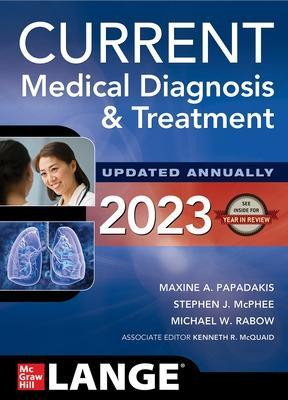
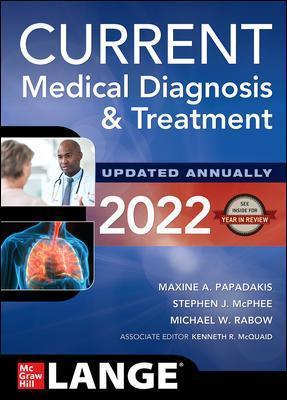
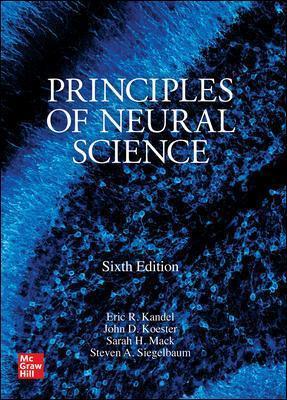

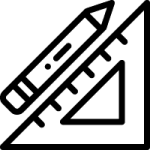



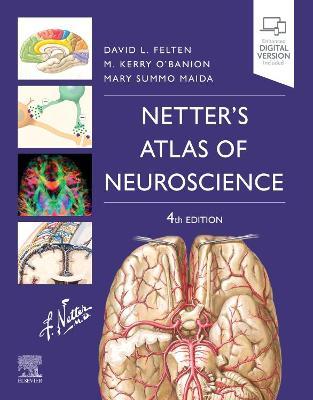

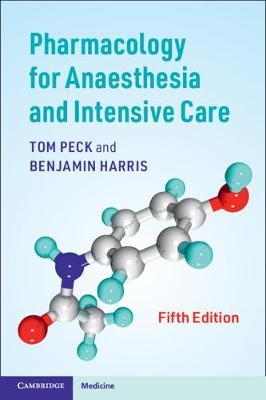


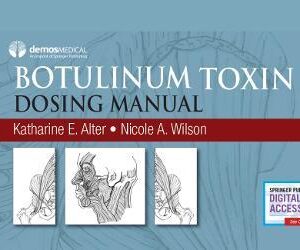
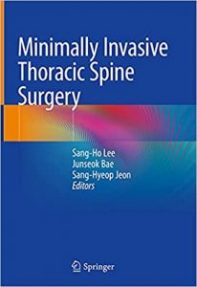
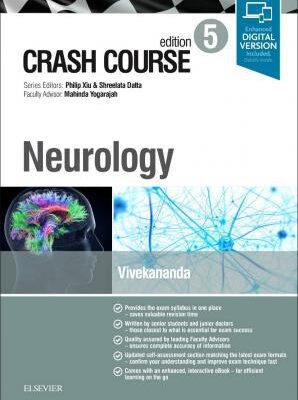
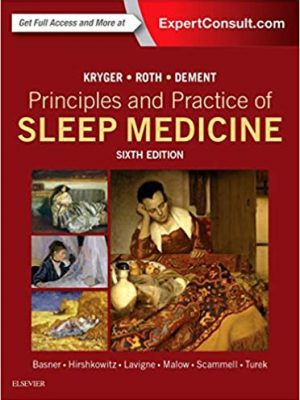
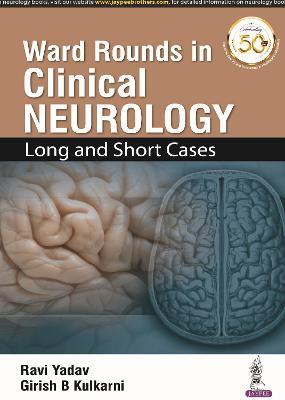
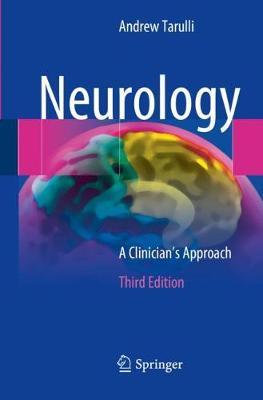
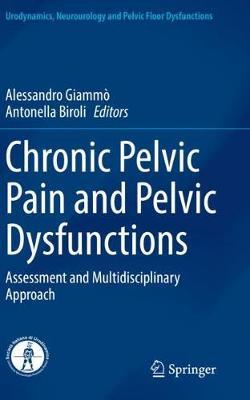
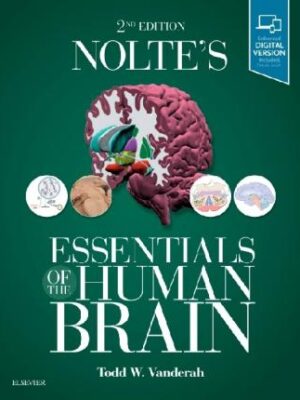
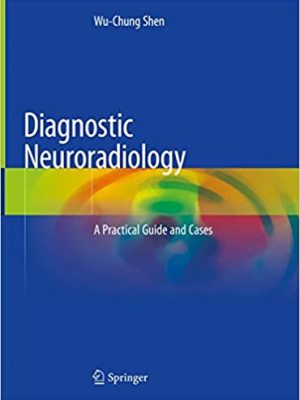
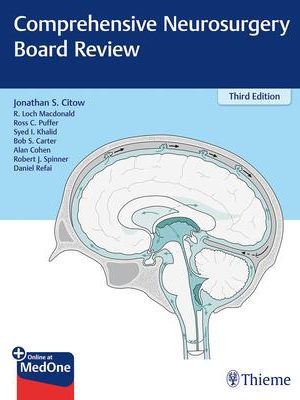

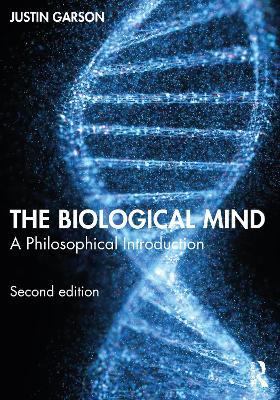
 Dentistry
Dentistry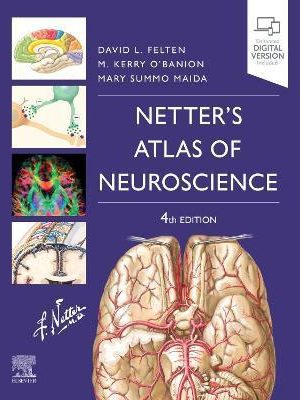
Reviews
There are no reviews yet.